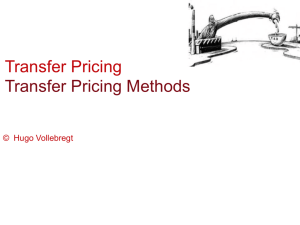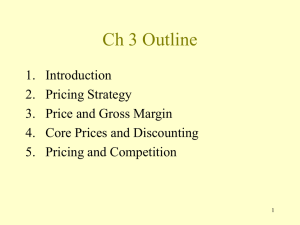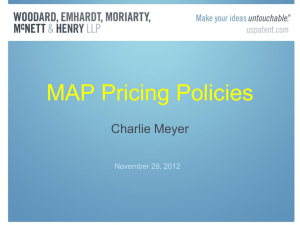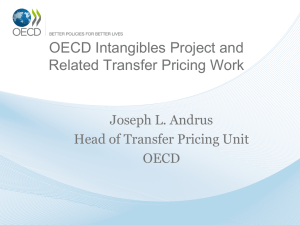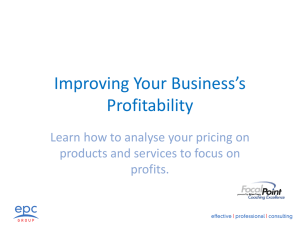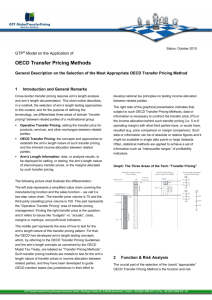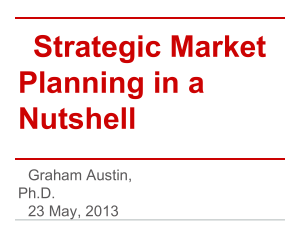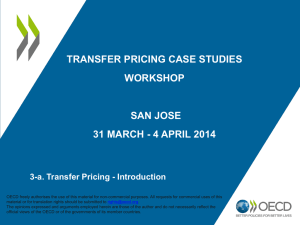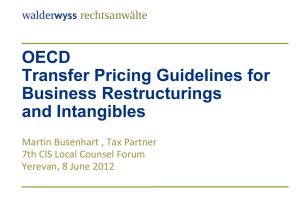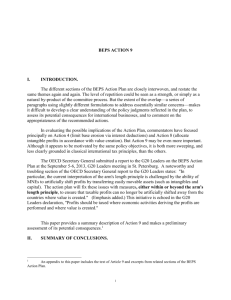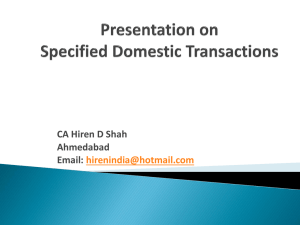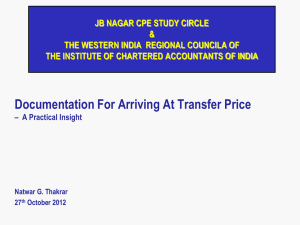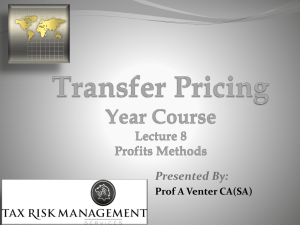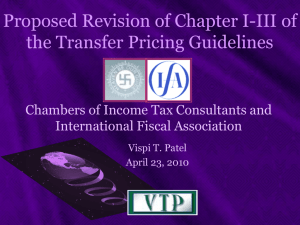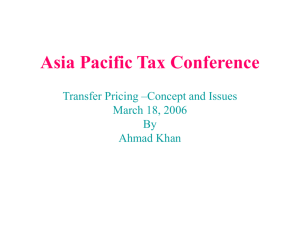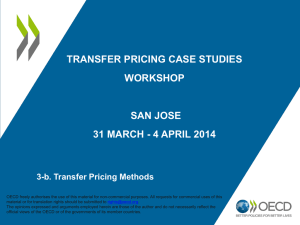less
advertisement
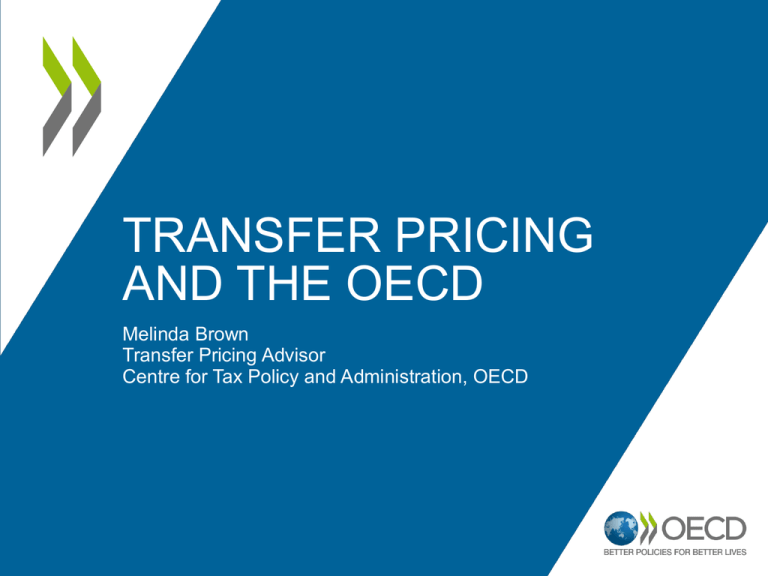
TRANSFER PRICING AND THE OECD Melinda Brown Transfer Pricing Advisor Centre for Tax Policy and Administration, OECD Transfer Pricing • Refers to the pricing and other conditions in place in transactions between ‘associated enterprises’ – normally companies • Applies to a very wide range of transactions – goods, services, intangibles, financial products • Generally applies to cross-border transactions, but in some cases may also be applied domestically 2 The effect of transfer pricing • Sales price = Company A – Assessable revenue to Company A – Deductible expense to Company B • Therefore affects the profits (and hence taxes) of both Sale of goods/services • May be used to minimise taxes (e.g. recognising taxable profit in favourable tax jurisdictions ) Company B • Other motives may include: customs duties, price and exchange controls and dividend policy 3 The OECD Our Mission.... Better Policies for Better Lives Our Vision.... A stronger, cleaner, fairer world Our Means Developing standards in key areas Experience sharing and peer review Measuring, analysing and comparing data 4 The Committee on Fiscal Affairs: What we do Develop and assist implementation of • Model Convention for Tax Treaties • Guidelines for Transfer Pricing and the taxation of MNEs • Global standards on Exchange of Information • Tax Policies for Growth • Statistics for tax policy making • International VAT/GST Guidelines • Countering aggressive tax planning and tackle base erosion and profit shifting (BEPS) Build effective tax administrations Improve capacity of tax officials 5 OECD Transfer Pricing Guidelines • Guidelines agreed by member countries; influential globally • ‘Authoritative statement’ of the arm’s length principle = Associated Enterprises Article of OECD Model Tax Convention • Transfer pricing rules established by domestic law 6 Objectives of transfer pricing legislation • Generally based on the arm’s length principle • To enable countries to – Tax a an appropriate amount of profits on cross-border transactions • What would an independent enterprise have paid / received? • By reference to economic contributions – Minimise risk of double taxation, and hence encourage trade and investment 7 Arm’s length prices • Determine arm’s length pricing for transactions by reference to comparable, but independent, transactions • Transfer Pricing Methods – All aim to determine the arm’s length price of the transaction – OECD Guidelines require the ‘most appropriate’ method is used – Ideally, more direct methods are preferred. Most direct method compares prices (“CUP” method) – But, to be ‘comparable’, there must be no differences between the tested transaction and the independent transaction which would materially affect the price 8 Comparability • Finding truly comparable uncontrolled prices is rare – Lack of sufficiently comparable but independent transactions – Lack of available data • Other transfer pricing methods rely on a comparison of gross or net margins, or a split of profits – Reliable gross margin data from comparable but independent transactions is also uncommon • Transactional Net Margin Method (“TNMM”) – Commonly used in practice – Reliable net margin data from comparable, but independent transactions is more often available 9 TNMM • Aims to determine the arm’s length transfer price for the related party transaction (or an appropriate group of transactions by comparing net margins • All other elements are reliable (not influenced by the relationship) Profit and loss statement Sales less Cost of goods sold Gross profit less Operating expenses Net profit – Sales (for the importer); or Cost of goods sold (for the manufacturer) – Operating expenses (for both the manufacturer and the importer) 10 Applying TNMM Transfer price = 70 Manufacturer (A) Sales less Costs of production Importer(B) 70 -40 Sales 100 less Cost of goods sold -70 Gross profit 30 Gross profit less Operating expenses -10 less Operating expenses Net profit 20 Net profit 30 -29 1 Return on sales: 1% TOTAL NET PROFIT (before tax) 20 + 1 = 21 11 Applying TNMM • If the arm’s length net margin from comparable, independent transactions = 4% return on sales for an importer, • Adjust the transfer price: Manufacturer (A) Importer(B) Sales -67 -40 less Costs of production Sales 100 less Cost of goods sold -67 30 Gross profit 30 Gross profit less Operating expenses -10 17 less Operating expenses Net profit Operating profit Return on sales: 4% -29 4 Transfer price = 67 TOTAL NET PROFIT (before tax) 17 + 4 = 21 12 Thank you 13

